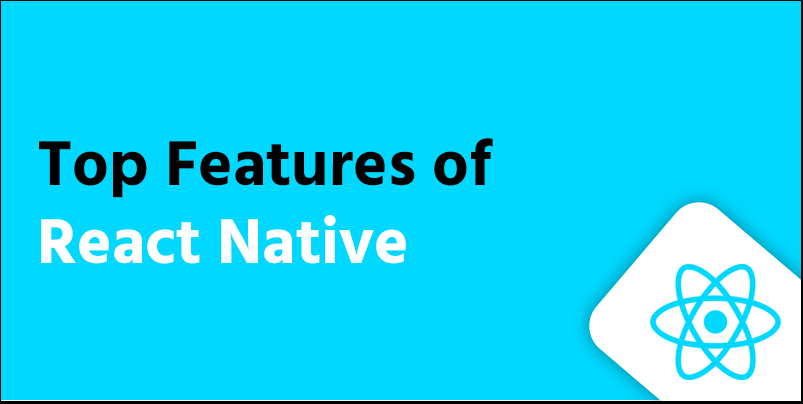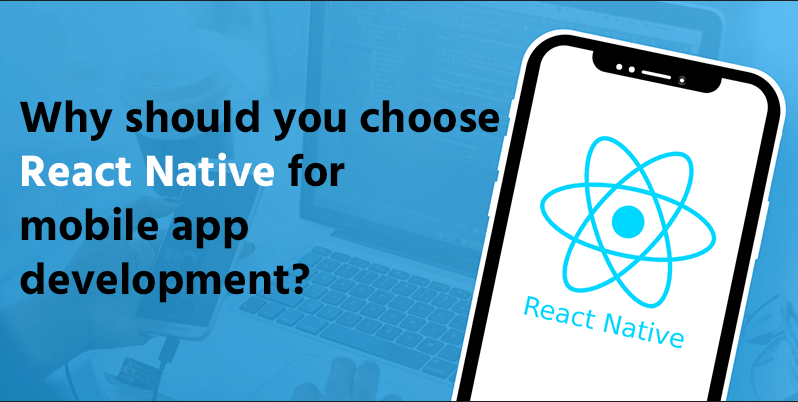Developing mobile apps that are both high-performing and cost-effective is crucial for startups, enterprises, and digital-first brands. React Native continues to be one of the top mobile app development frameworks, offering a powerful, cross-platform solution that enables you to build Android and iOS apps from a single codebase. With a growing need for rapid deployment, seamless user experiences, and smart mobile integration, React Native is an ideal choice for companies looking to scale in the competitive U.S. mobile app market.
Why React Native is Still a Top Choice for Android & iOS App Development
React Native remains one of the most trusted frameworks for mobile app development. Backed by Meta (Facebook), and supported by a massive open-source community, React Native enables developers to create apps for both Android and iOS platforms without compromising performance or user experience. It’s particularly valuable in today’s fast-paced market where businesses must launch MVPs quickly, gather user feedback, and iterate faster than ever.
Key benefits of React Native include:
Cross-platform efficiency (Android + iOS from one codebase)
Live and hot reloading for faster development
High-performance UI with near-native experience
Support for third-party plugins and APIs
Cost-effective mobile app development
Factors Making React Native Relevant
1. AI-Powered Mobile Experiences
AI-first development era, React Native integrates smoothly with AI APIs to deliver personalized content, predictive analytics, chatbots, and voice commands—especially relevant for retail, finance, healthcare, and on-demand apps.
2. Faster Time-to-Market
React Native speeds up development cycles, making it ideal for startups and agile teams needing MVPs or frequent app updates.
3. Voice Search & Smart Assistant Compatibility
Modern Android and iOS users expect mobile apps to support voice search, Siri, Google Assistant, and other AI integrations. React Native supports these features natively or via plugins.
4. Integration with IoT Devices
React Native easily connects with smart wearables, home automation devices, and health trackers, making it a great choice for building apps in the IoT and wellness space.
5. Enterprise-Grade Mobile Solutions
Enterprise mobility is on the rise, and React Native provides secure, scalable mobile solutions for industries like logistics, healthcare, finance, and education.
Key Features to Include in a React Native App
To make your mobile app successful for discovery in app stores, ensure it has:
Cross-platform native performance
Push notifications and in-app messaging
Dark mode and accessibility compliance
Voice search compatibility
Location-based services
AI-driven personalization
Offline functionality for remote access
Steps to Build a Mobile App Using React Native
1. Define Your Business Goals and Mobile App Strategy
Before development, identify your target users, business model, and platform strategy (Android, iOS, or both). Determine the features your mobile audience values most, such as push notifications, real-time updates, or secure payments.
2. Choose the Right Tech Stack
Along with React Native, use supporting technologies like:
Redux or Zustand for state management
Firebase or Supabase for backend as a service
TypeScript for scalability and safety
GraphQL for efficient API calls
3. Design UI/UX for Mobile-First Engagement
React Native allows easy integration with UI libraries like NativeBase or React Native Paper. Make sure your design is responsive, touch-friendly, and ADA-compliant.
4. Develop and Test Across Android & iOS
React Native supports both platforms simultaneously. Use tools like Expo, Fastlane, and Detox to automate testing and deployment.
5. Launch, Monitor, and Scale
Post-launch, monitor user engagement, crash reports, and session data using tools like Firebase Analytics or Amplitude. React Native makes iterative improvements seamless with code push and OTA (over-the-air) updates.
Cost to Build a React Native App
The development cost varies based on:
App complexity (basic, mid-level, or advanced features)
Platform integration (mobile + web or wearables)
Developer location (U.S.-based teams cost more than offshore)
Timeline and post-launch maintenance
On average, building a React Native app ranges between $10,000 to $150,000, depending on features, design, and third-party integrations.
What Is React Native?
React Native is a powerful JavaScript framework that enables app developers to create applications that look, feel, and perform like native apps. By using the same essential UI components as standard iOS and Android apps, it simplifies development. Developers can use mobile app ReactJS principles to assemble these components with JavaScript and React, enabling efficient and effective react mobile development. React Native’s approach to building cross-platform app development languages mirrors the methodologies used for online applications.
With React Native, developers can build apps that run seamlessly on both iOS and Android. Its ability to use a single app coding language for both platforms reduces development time and lowers Android development costs. Since its release in 2015 by Facebook, this open-source framework has transformed mobile app development. Facebook initially launched ReactJS as a web-first framework for mobile phone programming software and later introduced React Native for creating mobile application development languages tailored to native mobile apps. ReactJS emphasizes mobile-first design, while React Native is widely used for building native apps across platforms using shared codebases.
Top Features Of React Native

The quality of React Native applications is great. Many favor this framwork because of its rapid approach to mobile app development and code-sharing flexibility.
The majority of app development firms are transitioning to React Native due to its simplicity and scalability. If you are curious and want to know how React Native can benefit with its features, hire React Native developer from Echoinnovate IT.
UI Focused
Designing the User Interface (UI) of the application is one of the most challenging aspects of mobile app development. React Native is a popular framework because it places a great deal of emphasis on UI design. React Native is very responsive and has excellent rendering capabilities. This is why the international development community favors this paradigm.
Community Support
React Native’s community is one of the strongest communities in the field of cross-platform mobile application development and plays a significant role in the development of react native features. Developers from all over the globe began contributing, resulting in a robust community presence, which caused its popularity to increase.
Reusable Components
Reusability is the most significant benefit of React Native. Some of the components served as the framework’s primary building blocks are used more than once. Therefore, if you want to construct a native app, employing React Native components is your best choice. With this framework, cross-platform usability, uniformity, enhanced functionality, and increased performance are available. It can make a native mobile application technologically accessible in every way conceivable.
Hot Reload
Hot reload and Hot Module Replacement linked in React Native (HMR). HMR capability was established very first reloading option . The benefit of this rapid reload capability is that it practically provides the same set of functions and activities as previously.
Live Response
Live Reload Respond Native is the mobile next step after React; it improves on the React concepts and enables the development of strong mobile apps. In fact, this framework has an intriguing extra feature that is absent from native frameworks: the ‘live reload’ function, which enables you to rapidly evaluate the impact of your most recent code modification.
Automatically-Linked Native Modules
React Native CLI’s “Autolink” command is enhanced. Now, one may avoid utilizing React Native Link without difficulties, making programming simpler than before. The group has revised a connecting technique for the convenience of developers.
Why Should You Choose React Native For Mobile App Development?

Time and Money Saved
Developers do not need to generate multiple scripts for various platforms (iOS or Android) since Javascript can be used for both. Specifically, the ability to reuse code improves productivity, accelerates development, and decreases costs. Moreover, current open-source tools, especially UI frameworks, significantly accelerate the mobile app development process. React-based online application’s code is reused to construct mobile version.
Rapid Changes
Core to React Native mobile app development are hot and live reloading capabilities. This empowers developers to make real-time modifications and fixes in the code. The live technology automatically reloads the entire app after changes are made. Hot reloading reloads only a specific area of the change, simplifying the development and testing process. This bolsters the validity of the previous statement, making application development more rapid, efficient, and straightforward.
Large developer community
React Native is an open-source JavaScript platform that enables developers to submit freely available information to the framework’s development. If a developer encounters an issue while creating an application, they may seek assistance from the community. There will always be someone who can assist them in resolving their challenges; this has a favorable effect on the development of coding abilities.
Exceptional Performance
Fast refresh enables developers to operate an application while upgrading it to new versions and making UI modifications. The is no need to rebuild the complete application as changes are instantly visible. This results in two key advantages: time saving & enhanced productivity.
Steps To Develop React Native App
We will explain how to develop your first ReactNative application. To create our program, we must first configure our OSX-based development environment.
Prerequisites
Install Node, Watchman, the ReactNative command line interface, and Xcode first. To install Node and Watchman using Homebrew, follow the steps below:
- brew installation of node
- Install Brew Watchman
If you have already had Node installed on your PC, make sure it is Node 8.3 or newer. To get Xcode, visit the Mac App Store. Installing Xcode will also install the tools required to create an iOS application. Ensure that the version of your installed Xcode is 9.4 or later.
Install Expo CLI
Install the react native command line interface on cpm with install –g react-native-cli using this command: npm install -g react-native-cli
Create your project
After installing the Expo CLI, you may begin your ReactNative project. To get started, execute the following command:
$ expo init react-native-example
You will be prompted to choose a template. Use a blank template and provide the project’s name, then wait for the CLI to produce the necessary files and install NPM packages. Now, navigate to the folder for your project and execute the local development server using the command below:
$ cd react-native-example
$ expo start
After executing this command, the following information will appear on your terminal. Based on your development platform, you may test your application using an iOS simulator, an Android emulator, or a mobile device.
Add multiple screens to React Native App
Conditional rendering creates many displays and perspectives. Complex situations need powerful navigation systems like the React Native library. Since we’ll have two views in our app, conditional rendering is useful for many displays. App.js command to define Home() component.
Fetch Data in React Native
Now that you know how to switch between screens, let’s look at REST API data. After data retrieval, render the home screen. Hiring a React native app developer enables you to simply consume REST APIs and collect data from servers.
Conclusion
As we come to a close, it is our goal that it is crystal evident why React Native is so popular among app developers all around the globe. It is interesting that each new version of this framework includes some new and exciting features, which in turn makes the work of app developers much easier.
If you want to produce a React Native mobile app that is compatible with all platforms, has a powerful brand image, and quickens the pace at which apps are developed, hire react native developers from Echoinnovate IT with an experienced and flexible approach
FAQs
What is React Native?
React Native lets developers build mobile applications by utilizing web code. Facebook developed it to facilitate speedy prototyping of new products and features. It’s currently a popular mobile app development framework.
How long does it take to develop a native app using React for Android and iOS?
The duration of a React native project may be calculated by assessing a number of parameters, such as the project’s size, the platform to be developed, the complexity and quantity of design, and the number of additional features and functionality.
How much does it cost to create a React Native app?
Similar to the time, the cost of the project varies from project to project based on the project specifications. Contact us to discuss your project requirements and hire react native developers.
key difference between Reactjs Vs. React Native.
Reactjs is used for web development while React Native is used for mobile app development, with different syntax and components.



